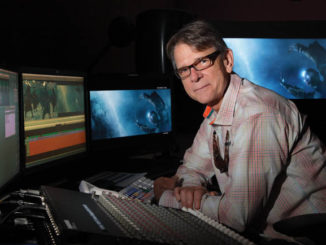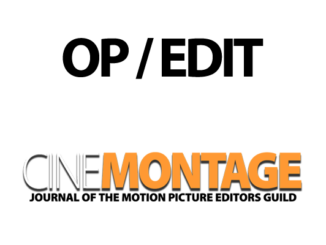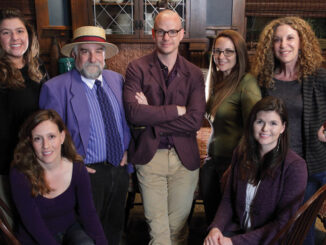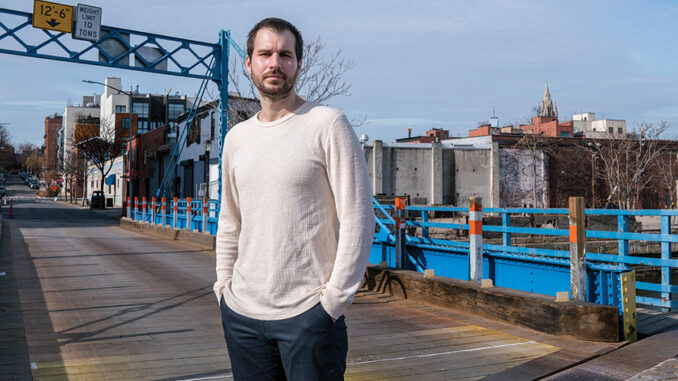
by Rob Feld • portraits by Sarah Shatz
Originally intending to be an actor, Keith Fraase fell in love with behind-the-camera work while at the University of Texas at Austin. Then he thought he wanted to be a cinematographer, but eventually fell into an apprentice editor job with Sandra Adair, ACE, to replace a friend who was leaving that position on Elvis and Annabelle (2007). From Adair, he learned a work ethic, a sense of a film family and a love of editing that would serve him well after she later referred him to director Terrence Malick.
Malick’s productions are known for their relentless pace, with multiple editors collaborating on any given film. Fraase originally interviewed to apprentice on the iconoclastic filmmaker’s The Tree of Life (2011), but heard nothing back. It would be two years before the film finally moved out of pre-production and Fraase, who had been editing corporate work in the meantime, finally got the call for the job; he was credited as “artistic consultant” on the film. Ultimately, Fraase became lead editor on Malick’s next film, To the Wonder (2012), and stayed with him for seven years. The director’s style of filmmaking, and the vast amount of footage it encompasses, also proved a perfect training ground for Fraase’s first documentary project, Amir Bar-Lev’s Grateful Dead film, Long Strange Trip (2017).
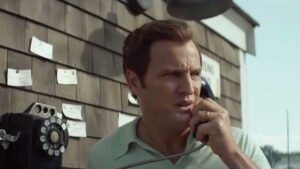
Entertainment Studios Motion Pictures
Eager to work on a more classically styled film, Fraase jumped at the chance when college friends who had written the script for the upcoming Chappaquiddick approached him to meet its director, John Curran. The feature film, which opens April 6 through Entertainment Studios Motion Pictures, depicts the scandal that eventually ended the presidential prospects of Democratic Massachusetts Senator Edward Kennedy (Jason Clarke), after he drove his car off a bridge, killing its passenger — an aspiring political strategist and Kennedy insider, Mary Jo Kopechne (Kate Mara).
Chappaquiddick, named for the island where the accident took place, presents the logistical truth of the actual events, but focuses on Kennedy, his disastrous decisions and his position within his unique and powerful family. Fraase’s challenge was to maintain empathy for Kennedy as the senator makes unforgivable choices. It was an obvious challenge to be sure, but — emerging from the stylistic difficulties of Terrence Malick’s films, and from a documentary that could have gone in any number of directions — one that proved far more complicated than the editor had anticipated, as he told CineMontage in an interview in January that also covers his work with Malick.
CineMontage: Chappaquiddick seems a radical departure for you, both stylistically and process-wise. Both the screenplay and camera moves are specifically designed.
Keith Fraase: It’s actually why I took the job. Chappaquiddick was a chance to try something that was more classical. I naively went into it thinking it was going to be a walk in the park, because I had worked on stylistically more adventurous films. But just because a script is fantastically written doesn’t mean it’s going to play fantastically when it’s all put together, or that people will perceive the film’s events in a certain way. When I was reading the script, my feelings toward Ted Kennedy’s character changed from scene to scene — between utter disgust to a sort of empathy for the shadow he lived under, cast by his brothers and his father. Sometimes I was rooting for him, sometimes I wasn’t.
CM: How did you approach that balancing act when you actually had footage with which to work?
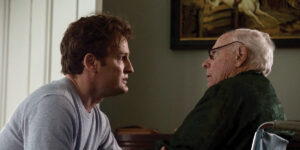
Entertainment Studios Motion Pictures
KF: It was tricky. The character makes some big mistakes. What is it like to live your life in the shadow of JFK and Bobby Kennedy? It presents a fascinating character, and even more so because it’s real. When I first spoke to John [Curran], I wanted to make sure we never condemned Ted fully, but rather felt empathy for him — not sympathy, but empathy for his position — while also understanding that the things that he did were questionable at best, and horrific at worst.
CM: And how does that translate to your job?
KF: The big thing that we worked on was performance choices. There were certain lines that read beautifully on the page, but when Ted’s character would say them, they would just make you wince with utter disgust for him. After test screenings, we tried to shave away as many of those as possible, to make the character someone you could at least follow through the film and not make you want to walk out of the theatre.
Many moments from our first cut were too specific when, as much as possible, we wanted to make what happened the night of the accident a question. It’s not known for sure whether Mary Jo was alive for hours afterwards; she could have died on impact or by drowning in the car. We wanted to say, “This could be happening.”
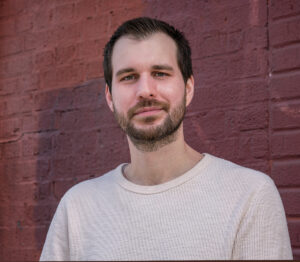 Basically, there’s a moment in the movie where there’s an intercut between Ted doing his nightly routine and Mary Jo in the car. That montage was created to express that this could be happening in Ted’s mind, the thinking of that. Now whether that comes across to the audience, I’m not sure. But we tried to stress the mysteries of that night, and not make a definite choice.
Basically, there’s a moment in the movie where there’s an intercut between Ted doing his nightly routine and Mary Jo in the car. That montage was created to express that this could be happening in Ted’s mind, the thinking of that. Now whether that comes across to the audience, I’m not sure. But we tried to stress the mysteries of that night, and not make a definite choice.
CM: Without giving anything away, can you name an example of a scene that was too specific?
KF: There was a scene that occurs after the accident, where Ted and his friends Joe Gargan [Ed Helms] and Paul Markham [Jim Gaffigan] go back to the bridge. Joe and Paul are diving into the water, trying to save Mary Jo, but they are unable to, and Ted says they need to get back. There’s a whole scene that takes place after that in which they’re arguing about what to do. After the first test screening, I thought, “No matter what, this is the scene; it’s gonna stay in the movie because it has hints and is very exciting.
But we ultimately ended up cutting that scene from the film because we realized from subsequent test audiences involving 100 people each that things were occurring in the scene that were swaying the needle too much in one direction in terms of how they viewed Ted’s character — and they were never able to get back and feel for him after that point. That totally came from those two screenings. We realized that scene was a linchpin that opened up a dam for us.
CM: What is your responsibility when telling a historical story like this one — about people who did or might still exist?
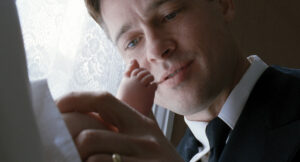
Fox Searchlight Pictures
KF: I had the luxury as the editor to focus solely on story. It was more John’s job to be aware of the fault lines. I felt it was my job to say, “This is the story that we’re telling. This is how best to achieve that goal.” If too many of us in the editing room are confined by other considerations, we’re going to keep ourselves from experimenting in a way that will produce the most interesting results.
But I’ve now worked on two documentaries [including an episode of the Dirty Money series, which became available on Netflix in January] and it’s weird talking about people as characters when they’re real. All of the films I’ve worked on with Terry were in some way autobiographical; Tree of Life deals with the death of his brother, and To the Wonder deals with his second wife. I was very conscious of the fact that when I’m talking about characters who do bad things, sometimes I’m talking to the person who did those bad things.
For any film, I try to have love and empathy for every character, whether good or bad. If you maintain that empathy for those characters, then you never have to worry about treading lightly because you really do care about them. I care about everyone in Chappaquiddick. Even if I think that their decisions were wrong, I don’t think that they’re terrible people for making wrong decisions. I just think that they were mistaken.
CM: Speaking of Malick, tell me how you got into his world.
KF: When The Tree of Life was finally ready to go, I was called to interview with Terry. To be honest, I hadn’t seen any of his films and wasn’t aware of his importance to cinema, so I wasn’t awestruck and we were able to have a nice conversation. When he interviews you, he likes to talk about where you’re from. I’m from Houston, which he knows really well. It wasn’t a chat about film; he was interested in me as a person.
CM: How did you make the leap from apprentice to full editor?
KF: Terry had always planned to do a movie in tandem with Tree of Life, which eventually became Voyage of Time [2016]; the creation section of Tree of Life would expand to be a 40-minute IMAX movie, released simultaneously. Because the producers had no one else available, I was asked to be assistant editor on it. I of course jumped at that, but really didn’t have the experience for it. But I was brought into a room to sit at a table of 10 people, including Terry, the producers and a visual effects supervisor who had worked on The Matrix and Batman Begins — heavy-hitters. They started asking me about workflow and process. I had no answers for anybody. I basically told them I would check on it and get back to them. It’s the most embarrassing moment of my career. But for whatever reason, they didn’t fire me.
CM: Yet you wound up as editor?
KF: An editor was supposed to be hired, but Terry was involved in cutting Tree, and they never got around to it. So, I just started cutting footage. I guess I was ballsy enough back then to grab Terry and pull him into a room to see what I had been doing. He was impressed enough that he started working with me. We ended up having a really good rapport. Part of what I did on Voyage then became the creation sequence in Tree. I worked on Voyage for about two and a half years [ultimately sharing editing credit with Rehman Nizar Ali], then became the lead editor on his next film, To the Wonder.
CM: So what was your process for working with Malick, once it became formalized?
KF: Terry has a very strict dogma, which I learned on Tree. There are exceptions to every rule, but he believes films should be fluid, so he’s always looking for the camera to keep moving, and always wants the actor to move. He wants deep focus as much as possible; he thinks selective focus doesn’t feel real — that it’s the filmmaker placing his own intention on the viewer, when you should be allowed to look around the frame as you please. The screen should be like looking into a window. Before To the Wonder was shot, we had a lot of conversations. It’s a really different process.
CM: What is that process like?
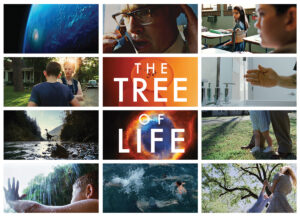
Fox Searchlight Pictures
KF: I don’t put together a rough cut, show it to the director and then have 10 weeks to deliver a final. It’s much more like a documentary. I make selects in a different way than I would for a narrative film, where there are actually takes. Instead, I’m making selects for behavior. I’m looking for interesting things that the actors do. It doesn’t have to include all the lines of the scene. Terry isn’t shooting scenes of a script; he’s giving situations to the actors for them to improvise, and is interested in what surprises him. So I’m just looking for moments of life that don’t feel like a line delivery. That takes a while to figure out with Terry. If I go through a scene and it wasn’t successful because nothing moves me, I might not select anything.
For Terry’s films, I’d make three different cuts of each scene, trying to use all of the footage that I had selected from however many hours they shot, to see the different ways a scene could go. We called that “triangulation.” By the time I’m on that third cut, and I’ve used all my main line selects, I’m usually working with scraps of things. I’ll end up making something that I wouldn’t have otherwise intended to make. And sometimes that can produce interesting and surprising results.
CM: How does that work with multiple editors?
KF: I think we ultimately had five for To the Wonder. We divide up the movie, differently for each film. We didn’t know exactly how they were all going to fit together. We’ll sit down, all three editors, and spend about a week looking at the different scenes and moving them around in the timeline, trying to find a structure that makes some sort of sense. This is all before Terry gets into the cutting room.
The first assembly we did of To the Wonder was nine or 10 hours long. We find the few kernels that are actually igniting and that we think we can make something from. Then we choose a representative cutout of the three cuts we would have made, and Terry comes in. He goes through every scene, every cut. It’s also incredibly frustrating because he is a phenomenal editor in his own right, but he refuses to learn Avid. He basically knows three buttons. He’ll say, “Just do something like this,” press those three buttons and do something amazing. I would beg him to let me teach him Avid but he refused to do it. I think he likes not having the power himself.
CM: Please explain.
KF: Terry is all about letting go of intention. He feels his job is not to create, but rather to recognize and select. When something happens, he’ll say, “That I can recognize as strong. We need to hold on to that.” Accidents are like the universe saying, “Hey, this should go here.” I think that’s why he likes to sit back as much as possible. Then we’re not locked when we mix. We mix, and cut, mix and cut four or five times. He wants the soundscape to be part of the creative process.
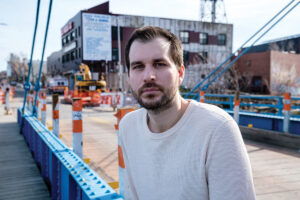 CM: That sounds amazing creatively, but isn’t it exhausting?
CM: That sounds amazing creatively, but isn’t it exhausting?
KF: It’s incredibly exhausting. I don’t think I could do it now. We dedicated a lot of our lives to the edit room. I think Terry really believes in overcoming struggle to create something. He likes the feeling that we’re under attack — that we’re racing against the clock, against money running out, or against financiers who want to take the movie away from us. He found a way of expressing himself, and he keeps trying to go down that path. I think for him to continue his journey, it’s good for him to keep changing his crew. Terry’s a kind and wonderful person, and he’s a good friend. And I do think he needs young people who are willing to go the distance with him, who have the stamina to keep going.
CM: Tell me about transitioning into documentary with Long Strange Trip.
KF: I was terrified about starting A Long Strange Trip because I had felt that I had never done a documentary. Voyage of Time was technically a documentary, but it’s kind of its own thing. Although this was working with a lot of interview material and voiceover, which Terry used a lot, as well. There was an infinite amount of archival footage, which I had also dealt with before. I was also used to trying to find the story in the images. Sometimes with a narrative film, the story is already mapped out. With documentaries and with Terry’s films, you have to dig deep and find where the narrative is in each image or each sequence. So I ended up being a fantastic fit, and I had a blast.
CM: Was there anything unique about the editing process of the 238-minute film?
KF: When I came on board, another editor had already been cutting for eight or nine months. At the time it was only going to be like a two-hour movie. They had a rough sort of idea of where the movie was going to go. I was brought on to help finish it. We did end up expanding the film. I helped flesh out the themes and we spent several weeks just doing that, trying to figure out where we wanted the story to go in terms of the themes and the ideas.
The only thing I can say that was unique about this process was that we sort of fine-cut as we went along, instead of just doing a very quick, rough edit. Of course, we would go back and change things. But we had the ability to breathe in the editing room, to take our time and really craft something that was layered and nuanced on the first pass.



